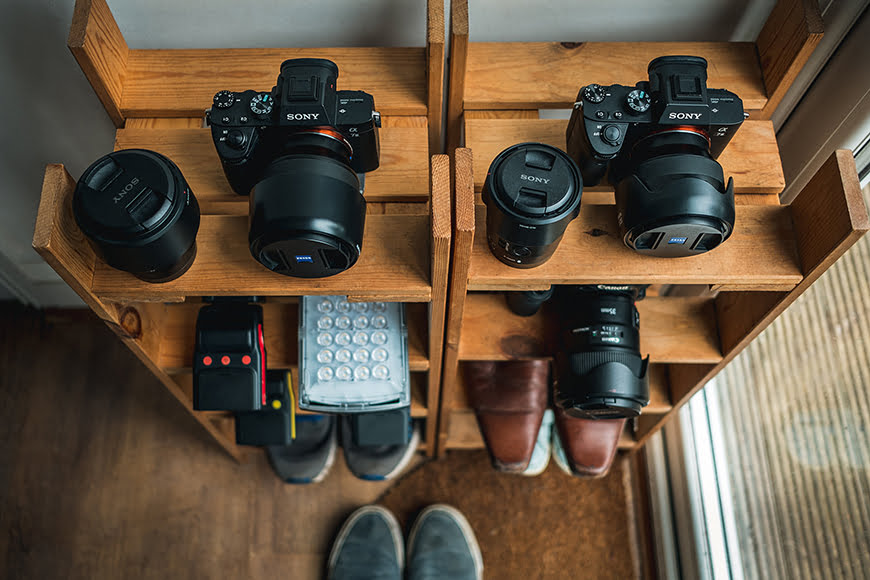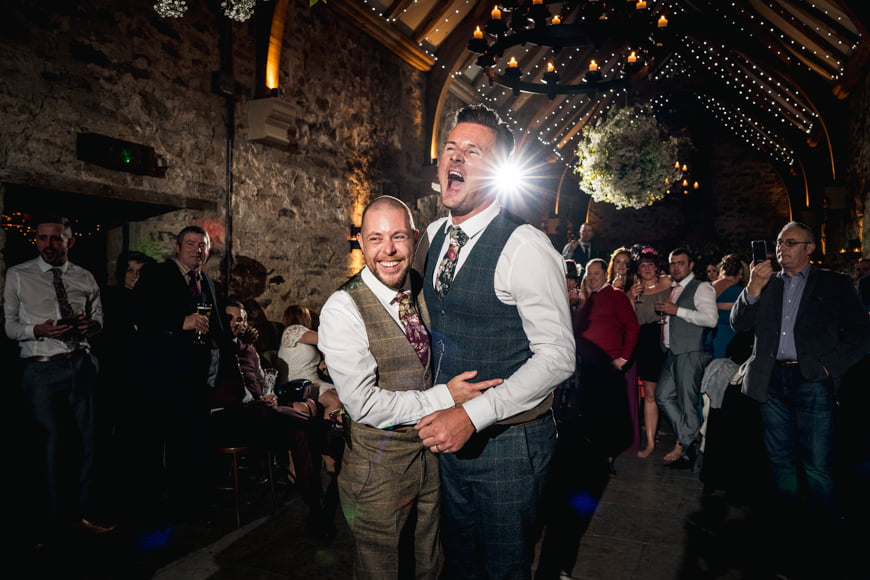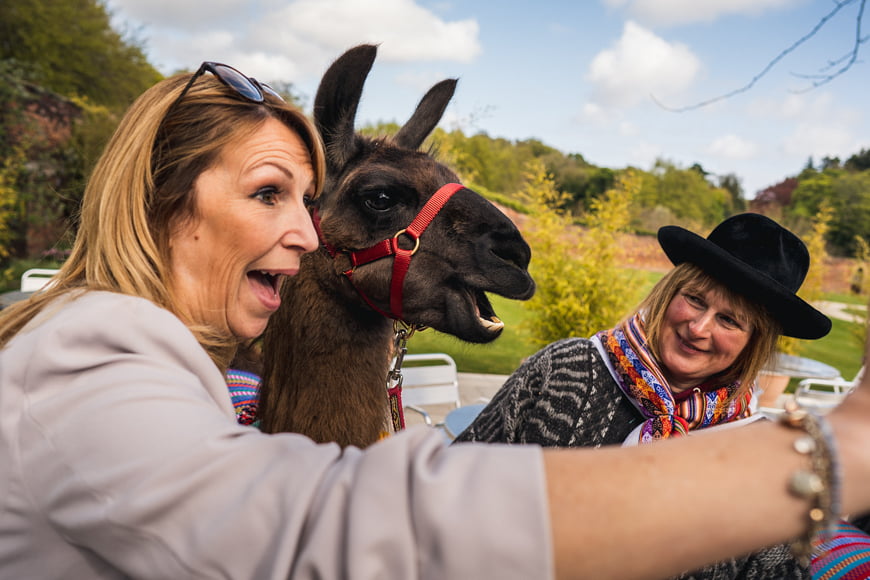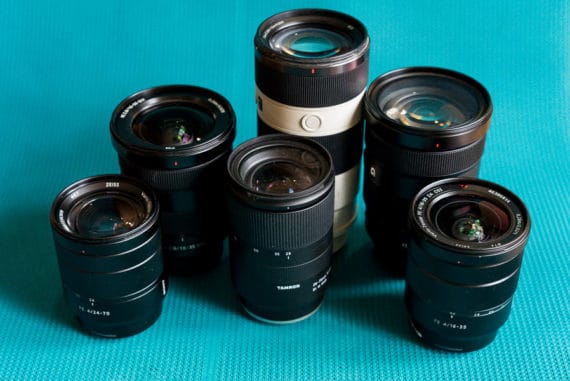







Andy Hudson
Wedding | Last Updated: January 21, 2021
Hi! Andy here, I’m a wedding photographer and also run Photographers Keeping it Real – a wedding photography awards featuring the world’s best documentary wedding photos.
I’ve been a wedding photographer for nine years and full time for five of those. It’s been a bit of a roller coaster ride, but hugely enjoyable and rewarding. My style is very natural and all about those real moments, I love to photograph people hugging, laughing and celebrating… there’s nothing better!
I used to be a massive gear junkie and take so much stuff to weddings. As my style has evolved though to be all about natural moments I take a pretty small amount (well compared to before at least!). Moving to Sony was the real game changer for me in this regard, I shoot small light bodies with small light lenses, and even my flashes are the smallest GN60s available I believe.
I shoot two bodies and mainly stick to 25mm and 40mm for most of the day, with 85mm being used for speeches and some ceremonies where I’m a little further away. I don’t need a lot as my mentality is that I want to be up close to whatever is happening, and so all I really need are two fixed length lenses and my legs take me where I need to be.
I used to shoot Canon and still have my old 5D Mark III as a backup with the 35mm L MKI. They are great cameras but the ability to shoot using the LCD screen on the Sonys for the entire wedding is something I couldn’t live without now. It frees me up to see so much of what’s happening around me which was never possible when peering through a small viewfinder.
I think that was the biggest benefit of switching systems for me. I’m not too bothered about all the fancy custom buttons although I do use them, it’s the ability to feel part of the action by having a view outside of what I see through the camera that has helped me capture so many more natural moments in recent times.
Cameras
Sony A7 III x2 – They’re small, lightweight and amazing value for money. I used to be someone who would always be chasing that next upgrade, but I actually can’t think of a single thing I need that the Sony A7 III doesn’t deliver on. Moving from a Canon EOS 5D Mark III to an A7III felt like I’d jumped into the future, it was that much of a leap forwards.
Shooting using the LCD screen hasn’t just changed how I shoot but I feel it’s made me more inconspicuous too. I’m no longer the photographer peering through his viewfinder, I’m just a guest wandering around and then suddenly BAM! I’m taking a shot without anyone really even noticing despite me being super close to them before I disappear again into the crowd of guests. It’s so liberating to be able to shoot this way.
Lenses
Zeiss Batis 25mm f/2 – What isn’t to love about this lens? It’s excellent value, sharp as a tack, and quick to focus. I can’t think of a single time where it’s not done exactly what I expected it to. Oh, and it’s also exceptionally light, as someone who was used to heavy Canon bodies and lenses there’s something really satisfying about shooting with such lightweight equipment.
I use my 25mm for pretty much everything, bridal prep layered scenes with other people getting ready behind or to the side of the bride, wide angle shots of the ceremony, people hugging during the drinks reception and also wider scenes to create layered stories… everything basically from the start of the day all the way to the dancing!
Zeiss Batis 40mm f/2 – My other mainstay lens, I shoot probably 85% of a wedding on either this or my 25mm Batis. It’s a slightly odd lens that took a little while to adjust to. You’d think 40mm would look a lot like 35mm, but actually, it feels and looks more like 50mm, it’s not something I was prepared for but I persevered with it and ended up loving it.
It’s not as sharp as other lenses, and in darker venues it can hunt for focus, but as the A7III has eye focus I just rely on that function when this happens and it seems to find focus a lot quicker and more accurately.
It’s also another light lens, not as light as the 25mm but close, so again it reduces the fatigue caused by larger lenses in the 35mm-50mm range. This is very much a lens you learn to love rather than appreciate straight away, but once you have learnt to love it, you won’t want to change it for the world.
40mm is my main lens for portraits, but it’s so versatile I use it for bridal prep, the drinks reception and sometimes speeches too if the room is quite tight. I tend to shoot a load of images on my 25mm Batis, then use this lens for a while to add variety to the part of the day I’m shooting.
Sony FE 85mm f/1.8 – Value for money this has to be one of the best lenses on the market. It’s lightning fast, the sharpest lens I own and so unbelievably well priced. I don’t use it a lot during a wedding, just for speeches (guest reactions as I use my 25mm for the top table), and ceremonies where I’m a little further away than I’d like with the 40mm.
I can’t imagine a lens that would make me think I need to upgrade, maybe one will come one day, but it does everything I need it to and has never skipped so much as a beat.
Sony FE 35mm f/1.8 – I recently purchased this lens for personal work and expanding into family shoots. I’ve always found 35mm to be the most versatile focal length but also the most uninspiring. It’ll be interesting to see how much I use it – maybe I’ll start shooting more party shots with it as sometimes I find 25mm just a little too wide, but if not I’ll use it for family photography instead as it works better for me with that type of shoot than weddings.
Lights/Triggers
Nissin i60A x3 – It’s funny when wedding photographers are guests at a wedding I’m shooting and they see my speedlights, they can’t figure out what they are… they’re just so damn small and compact they barely even look like flashguns. I had the Canon versions before I switched to Sony and as I knew how to use them I just bought the same again for my new system.
They’re Godox V850II GN60 so as powerful as a wedding photographer could need, and I put two in my shoulder bag in case I need them during the speeches – the bag doesn’t seem to weigh any more with them in there, they’re an amazing engineering feat!
They’re extremely reliable too with minimal misfires and a quick recycle time. The only issue I’ve found with them is that they’re so small gels are hard to secure to them (as I’d imagine other attachments would be too). I do a small amount of off camera flash work but not loads so for me this isn’t an issue, but maybe for others.
Nissin Air 1 Commander – This allows my camera to communicate with my speedlights. It has three channels which I’ve colour coded on the LCD display and then added coloured stickers to each flash so I can change their power or zoom without needing to touch the back of them. You can use it to change the power of each channel individually in both manual and TTL modes and change the Zoom too. They’re simple but highly effective, and just like the Nissin speedlights very reliable.
Manfrotto Micro Pro 2 – I love this LED light panel, it’s fairly small but super bright. I occasionally use it to light a couple at night if it’s super windy and I’m worried a speedlight on a light stand might topple over, but often I just use it to help me find focus on the couple in the dark. Writing this I realise I basically just use it as an expensive torch, so maybe I need to start finding more productive uses for it!
Bags/Straps
Think Tank Airport Takeoff V2.0 – A roller suitcase that fits everything I need for a wedding and more. I leave this in the boot of my car until just before the first dance as I don’t use most of the gear in there for the majority of the day.
In there though I have my third backup speedlight, my backup body and lens, loads of memory cards and batteries, my LED light panel, and a shoot through umbrella and bounce umbrella for any off camera flash portraits once it gets dark. I sort of view this bag as my life raft, it has stuff I probably won’t need, but it’s there if I need it, it’s even got things like pain killers in case I hurt myself during a wedding, and cold and flu tablets.
Think Tank TurnStyle 20 Sling V2.0 – The perfect shoulder/slingshot bag in my opinion. I can fit a lens, a water bottle, two speedlights and my Air commander 1 in the main part, and all sorts of crap in the front pocket like cereal bars, a metal ring (for the ring of fire, which I never do), flash gels (which I hardly ever use), a prism (again hardly ever use). I think maybe it’s time for a clear out actually now I’m looking at how much junk is in that front pocket!
I don’t wear this bag much during the day, usually I just pop it in a corner (and then forget where it is!), and when I need to move it I just pop it on my shoulder until I find it’s new home. If I do need to wear it though it’s very supportive with the strap coming across your body.
Spider Holster (2 clips) – I have lots of back problems, and so when I first started out as a photographer I struggled a lot with cameras being hung around my shoulder, so I bought a Spider Holster and have never felt the need to switch to anything else. It distributes the weight on my hips, which is so much better for me than my upper back.
Tripods
Cheap light stands x2 – No idea the brands or models, they aren’t the absolute cheapest but maybe one level up from that. They work, they don’t blow over if someone farts next to them, they do the job I need them to do, but it’s not something I’ve ever really invested much time or money on when choosing them.
I also recently invested in three Joby Gorilla pod 3K for when I need to add OCF for the first dance and there’s not enough space for light stands or they’d be a trip hazard. I’ve only used them once so far but I really loved the fact you can basically just attach them to anything and not worry about guests knocking them over and destroying your speedlights.
Hardware & Software
My culling is all done in Photo Mechanic. Like I think 99% of wedding photographers I find it’s an essential part of my setup – it’s a great piece of software that makes culling speedy and efficient.
The majority of my post processing is done in Lightroom Classic with two presets, one for colour and the other for black and white. I’m not someone who has 1000 presets, it’s just a base colour preset that I tweak on every image or convert to B&W if I find the colour casts too strong, or it just looks nicer and more emotive that way.
I export using a sharpening plugin called Mogrify. I find Lightroom’s sharpening crunchy and not pleasing to the eye, but Mogrify has a much nicer and less digital look to sharpening. It just applies the sharpening on export so there’s no need to load into another program and apply/export, which is great as it doesn’t add any steps or time to my workflow.
Any images that need additional skin retouching or cloning/spot removal I use Photoshop CC, it’s a much better tool than Lightroom for this type of work.
I use BlogStomp to create my website blog posts as I love how it allows me to group multiple images together. This means I can post several photos of the speeches and it still really only takes up the space of one single image in my blog post.
JPEG mini – I use this after BlogStomp to do lossless compression on the image files, it helps keep my website speed high without really any noticeable drop in quality. It saves something like 20mb – 30mb per blog post, so when you consider how much Google penalises you for a slow site it’s an essential tool for blogging!
Pixellu SmartSlides – One of my favourite software programs, I can make a slideshow in a matter of minutes and it’s not only easy for me to share it with the couple, but also for them to share it with all their friends and family too – it’s a fantastic way to organically market yourself to all your client’s loved ones.
I used to use Adobe Premiere and it took about an hour to create each slideshow, I’d have to pay to licence the tracks (which come included in your SmartSlides subscription), and sharing it with the client wasn’t easy and likewise for them to do so with others. I’d say SmartSlides is an absolute game changer when it comes to making slideshows.
Pixellu SmartAlbums – As with SmartSlides it’s a simple and intuitive system that helps you create something in no time at all. I can create and share a 30 page wedding album with a client in 20 minutes, and with cloud proofing they can view and send their feedback instantly. It makes designing wedding albums as easy and quick as it could possibly be.
PicTime – I switched to PicTime from Zenfolio at the start of the year and find it a far better system to use. It’s got some great features like a banner in the gallery advising of when your special offer ends to help push print sales and a much more intuitive interface. I haven’t had a chance to really put it into action fully yet due to all the cancellations and postponements this year due to Covid, but I’m already able to see how much of a leap forward it is compared to my old system.
Docusign – I use this for all my contracts but will be moving over to a full client management system shortly. It’s great for sending contracts, simple and easy to use, but I feel like I need to improve my workflow when it comes to dealing with clients and as client management systems have built in contract functionality I will be switching over to Light Blue in the near future.
Misc.
In my shoulder bag I carry all sorts of random stuff that occasionally I come across and think ‘Hhmm… I used that once about three years ago’, so I’ll just stick to the important stuff here.
A small bottle of sunscreen – Shooting in the UK means this lasts a long time but it’s important to have for those days that start off cloudy but quickly become glorious hot sunny days.
Ear plugs – I don’t have the best hearing in the world from dancing right next to massive speakers at super clubs in my early 20s, so I always wear ear plugs when shooting on the dancefloor. There’s definitely some frequencies I’ve lost from not looking after my hearing when I was younger, and I’m careful now to not do any more unnecessary damage.
Microfibre cloth – For those times when my lens gets too wet to dry with a corner of my shirt!
Large bounce card – There’s one venue I shoot at which is really badly lit with all the light coming from behind the couple. To make it worse you have to stand inside a massive fireplace to shoot the ceremony, and the ceiling of it is about five inches above your head, meaning you can’t use any flash.
So this is the one and only time I ever seem to use the bounce card, but it works great for directing some flash toward the couple without having to use direct flash. It doesn’t create beautiful light, but sometimes it’s about making the best of the situation you’re in.
Eneloop batteries – I use these for my speedlights as they last a long time and recycle quickly.
I also have a change of clothes in the car, although so far I’ve not had to use them – fingers crossed it stays that way as I seem to be the only male photographer I know never to split his trousers at a wedding!
I seem to be pretty disaster-prone, I once got locked in the church after the ceremony and missed an hour of the reception, been given the wrong church by the groom and nearly missed the ceremony, and during my fourth wedding I dropped the rings in a big bush about 10 minutes before the ceremony which resulted in the groom, the best man and I all on our hands and knees searching through dirt and plants for them!
Luckily over time, I’ve learnt how to be less clumsy and manage to avoid any major issues these days.
About three years ago I set up a wedding photography awards for documentary images because I felt it was an under appreciated part of weddings when it came to accolades, yet these moments often are the most emotive, funny and mean the most to couples.
It has members from all over the world submitting incredible work, you should check it out if you love REAL moments, the images are hugely inspirational and remind me just what I love about weddings and the people we meet and photograph.
www.andyhudsonphotography.co.uk | @andy_hudson_photo

Check out these 8 essential tools to help you succeed as a professional photographer.
Includes limited-time discounts.












